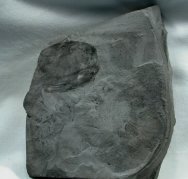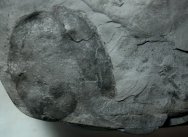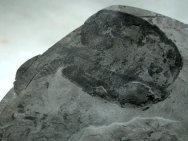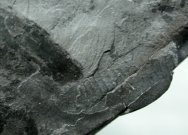Brachiocaris pretiosa
(Resser, 1929)
Phylum Arthropoda (Euarthropoda stem group)
or
Phylum Arthropoda, Subphylum Crustacea, Class Malacostraca, Subclass Phyllocarida
Geologic Time: Early Cambrian
Size: 68 mm long by 36 mm across
Fossil Site: Wheeler Shale, House Range, Utah
|
Branchiocaris
have a large carapace that protects the anterior part
of the body.
This carapace structure hinged along the dorsal
edge in the same manner as a bivalve. Usually only the The
taxon is also known from the Burgess Shale of British Columbia,
where it is rare, while Resser (1929) named the genus Protocaris and classified it as a phyllocarid crustacean, but other workers later considered it more closely related to trilobites. Four decades later Briggs (1976) erected the new genus Branchiocaris, prefering a stem arthropod status. Bergström (1997) later placed Branchiocaris was a calmanostracan branchiopod, while other's phylogenetic analyses placed it close to Marrella (Briggs, Fortey and Wills, 1992). Budd (2008) argued Branchiocaris to be a stem euarthropod, belonging to a clade also containing Odaraia, Fuxianhuia, Perspicaris and Canadaspis. Thus, Brachiocaris continues its enigmatic legacy. The subclass Phyllocarida contains three orders, one extant (Leptostraca, classified as a Malacostracan), and two extinct (Hymenostraca and Archaeostraca). Also See: Utah Cambrian Explosion Fossils Pseudoarctolepis Phyllocarid Fossil from Wheeler Formation References: |
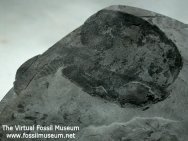

 another member of the genus (Branchiocaris
yunnanensishas) is described from the
another member of the genus (Branchiocaris
yunnanensishas) is described from the 